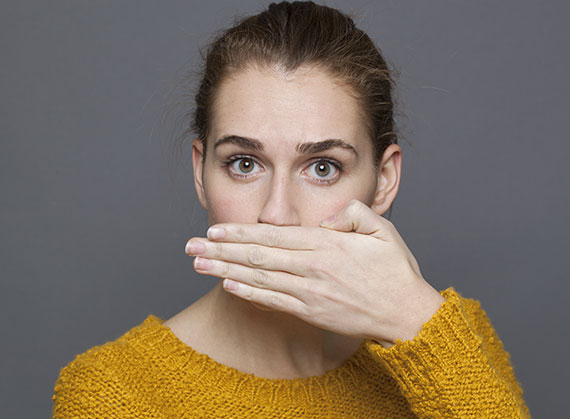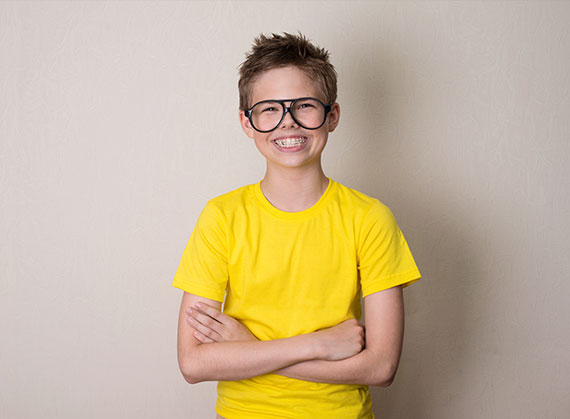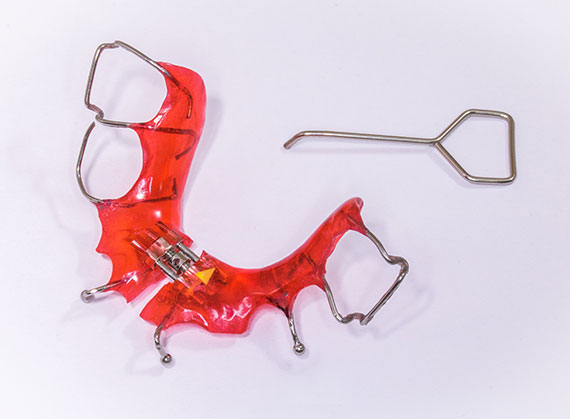Orthodontics

What is Orthodontics?
Orthodontics is the medical specialty that is dedicated to the study and treatment of developmental and positioning anomalies of the teeth, of the bones of the face and of the attached musculature. It therefore has the objective of obtaining an ideal occlusion in a harmonious face in fact the fundamental objectives that the orthodontist aims to achieve are not limited only to the correct alignment of the teeth, but also to the attainment of a harmonious aesthetic of the face, of an efficient masticatory function and a better state of health of the teeth and their supporting tissues.
By ideal occlusion we mean the best intercuspidacion (relationship) possible between the teeth of the lower arch housed in the mandible and those of the upper arch that are located in the maxillary bone, so as to allow a correct masticatory, phonatory and aesthetic function. Instead we define as a malocclusion the complex of skeletal, muscular and dental alterations that do not guarantee the proper functioning of the stomatognathic apparatus.
How does the orthodontist see your mouth (and your face)?
The orthodontic examination is not limited to assessing the mouth and the position of the teeth, but carries out a thorough analysis of the face, the musculature, the temporomandibular joints and the teeth.
An incorrect alignment of the teeth is often the mirror of a disharmony of the facial bones (upper and lower jaw) to which the teeth of the upper and lower arches are attached, which develop during growth following inappropriate rhythms and directions.
How do dental arches behave in different types of skeletal development?
When the profile is harmonious and regular (class I) there may be incorrect dental positions often due to lack of space for the alignment of all the teeth. The permanent teeth may not find the best housing along the dental arches, causing crowding and producing an irregular occlusion.
In cases of convex profile (class II) often the dental arches are not congruent with each other. The teeth of the upper arch are positioned further forward and the upper incisors do not contact the lower antagonists. The over-advanced position of the upper incisors with the typical “bunny” appearance attracts the attention of parents.
In cases of concave profile (class III) the upper dental arch is more backward than the antagonist arch. The lack of anterior dental support affects the profile of the upper lip, which appears more thinned and backward.



What are the benefits of early orthodontic treatment between the ages of 5 and 8?
In all those patients in whom a real indication has been established, an early orthodontic therapy offers many opportunities:
- Guide the growth of the jawbone especially in cases of concave profile (III skeletal class).
- Broaden the palate in the cases of anterior and / or posterior (cruciate) bite, mono or bilateral.
- Correct the excessive protrusion of the upper incisors and thus reduce the risk of trauma of the elements themselves, because if they are correctly aligned they are also more protected by the upper lip.
- Reduce or eliminate problems related to bad habits (finger sucking, labial interposition, atypical swallowing and lingual push), oral or mixed breathing, incorrect speech with difficulty pronouncing some consonants or phonemes.
- Promote proper eruption of permanent teeth.



What are the objectives of orthodontic treatment during the pre-pubertal growth phase, between the ages of 9 and 13?
If the child has a regular and harmonious skeletal growth, attention will be given to the exchange: the space available for the permanent teeth along the arches is evaluated and any interventions are planned to guide the eruptive path.
Once the dental exchange is completed, the need for a phase of alignment and correction of the relationships to consolidate the occlusion is evaluated. Some malocclusions depend instead on a disharmonious growth of the bones of the face and derive the maximum benefit from a treatment during the period of greatest growth, between 9 and 13 years.
During this phase the child fully develops its skeletal growth potential (6-10 cm per year), in fact the organism in this moment lives the peak of growth and the genetic component manifests itself determining the individual characteristics. During this period one frequently witnesses a slowed growth or with an incorrect direction of the jaw or jaw, which lose the contact and the common progression leading to the establishment of a bad occlusion.
What equipment does the orthodontist use to correct bone growth problems?
Dento-facial orthopedics makes use of mobile or fixed equipment that modulates bone growth, expressing the greatest therapeutic effect if used during peak growth, and can improve skeletal relationships by bringing the child back into more harmonious growth patterns. The most used orthopedic devices are:
- Fixed or removable palatal expanders.
- Extraoral tractions.
- Activators and functional equipment.

And what equipment can move teeth?
Orthodontic treatment uses fixed equipment, that is attached directly to the surface of the teeth. The equipment for fixed orthodontic therapy can be used during growth and in adulthood and is a system of brackets and wires applied directly to the teeth in order to move them towards predetermined directions in order to obtain multiple results: a correct relationship between the upper arch and lower arch, good functionality and pleasant aesthetics.
Once the active phase of the treatment with the removal of the fixed apparatus is over, a restraining device is applied with the purpose of stabilizing the teeth in the new position, giving time to the supporting tissues of the tooth – the periodontal ligament, alveolar bone, muscle tissues – to adapt to change and to stabilize occlusion permanently.

Why is it necessary to eliminate healthy teeth?
The teeth align along the arches and settle according to the space they have available but sometimes the length of the arch is not sufficient to accommodate all the teeth. Usually the last teeth that break out are not able to line up correctly and are arranged where they find less resistance: typically they are the canines that erupt high and external.
If you want to align the teeth in the arches restoring a good occlusion and an expansion of the arch is not possible, the orthodontist recommends the extraction of dental elements that are often perfectly healthy.

